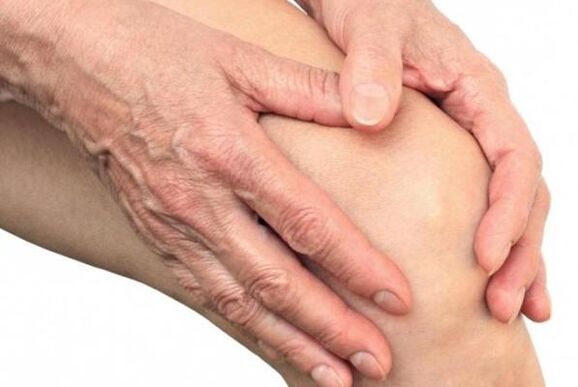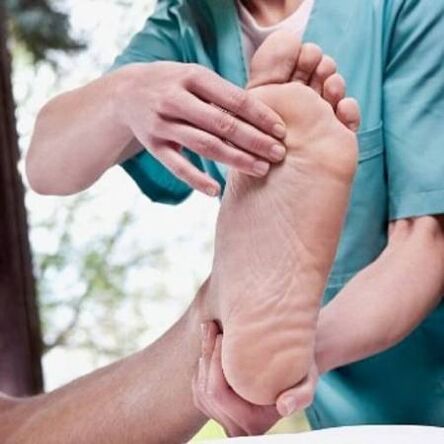Arthritis and arthrosis are two pathologies that affect the musculoskeletal system, ie joints. The etiology and pathogenesis of these diseases are different, but the end result is the same: damage to joints (cartilage, meniscus, intra-articular structure and tendon-muscle corset) with soft tissue inflammation, disruption of anatomical and physiological structure. destruction.
Separately, these pathologies represent: arthritis is an inflammatory process, with the participation of a certain group of enzymes, the purpose of which is to destroy the connective tissue of the joints. Osteoarthritis is the destruction of joints, ie an irreversible phenomenon with complete or partial deformation of all joint components with limitation of organ biomechanics. In order to exclude these pathologies, plus to carry out proper prevention, you must know everything about arthritis and arthrosis, which is the difference than treating it.
Specificity, difference and causes
The difference between arthritis and osteoarthritis is as follows: arthritis can be eliminated with medication, and arthrosis with medication plus surgery and only after the main cause, such as comorbidities, metabolic disorders or injuries, has been eliminated. Inflammation of the joint or arthritis can occur after a mechanical injury, long walks, or a vertical load. The process involves any joint (upper and lower extremities plus all the joints that make up the chest and spine) with a single or paired lesion. Inflammation attracts not only the joint components, but also all layers of surrounding tissues, and this fact depends on the depth of the lesion. With high-quality treatment, inflammation is eliminated and cartilage tissue is gradually restored.
Destructive pathology of the joints or arthrosis can be stopped only after treatment of the underlying disease or correction of metabolism or hormonal composition. The disease consists of partial or complete abrasion of the cartilaginous plate. The exposed bone is covered with osteophytes that create unbearable pain when moving. Furthermore, the joint loses its biomechanical ability, which is often the patient's fault - it tries to spare the diseased joint, which quickly ankyloses. This fact explains the difference between arthrosis and arthritis: in arthritis the joint regains the ability to move (unless the anatomical structure of the locomotor system is disturbed due to an accident or infectious-inflammatory disease), and in arthrosis the physiological ability to move is partially restored in first degree lesions, and in the advanced stage - only surgically.
Causes that lead to the development of arthritis and osteoarthritis:
- Arthritis is caused by: mechanical injuries (bruises, blows, open and closed fractures with or without microbial infection), constant physical activity (running, walking, jumping, lifting weights) and physico-chemical factors (sharp drop in temperature with hypothermia or overheating)joints). Allergies and poisonings are also included in the group of causes that cause the disease. In childhood, arthritis is a consequence of beriberi and reduced immunity, as well as frequent injuries, especially of the joints of the lower extremities.
- Osteoarthritis has a wide range of causes, such as: hereditary connective tissue diseases, increased background of allergic reactions, autoimmune diseases, rheumatic component, metabolic disorders, diabetes mellitus, thyrotoxicosis, chronic liver and kidney diseases, as well as changes in female and male hormones. (estrogen and androgen). Sarcoma or cancer is one of the malignant neoplasms that leads to a destructive process in bone tissue and cartilage. Intoxication of the body with toxins or increased radiation is a clear mechanism for the development of osteoarthritis.
Bitan! After diagnostic manipulations it becomes clear where arthritis and osteoarthritis are, what the difference is and how to treat it. Folk remedies can stifle the inflammatory process, but it is impossible to get rid of the disease, so consult a doctor!
Symptoms of joint disease
Clinical symptoms: what is the difference between arthritis and osteoarthritis
> zxtable border = "1" cellpadding = "0" >Attention! When the first symptoms of inflammation appear in the finger joints, there is no need to suffer pain and wait for the deformation of the joint - this will lead to irreversible processes in the form of anatomical changes and physiological disorders.

To the question: "arthritis and osteoarthritis, what is the difference in the fingers? ", There is a reliable answer: weakening of the fingers, reduced sensitivity and unbearable pain during physical exertion that does not disappear after a night's rest. Treatment is exclusively medical.
The difference between arthrosis and arthritis of the knee joint is as follows: in arthritis, the pathology is eliminated after the course of treatment according to the therapeutic regimen, and the biomechanics of the joint is restored after rehabilitation. In the case of arthrosis, depending on the degree of damage, biomechanics is subject to partial restoration only after surgery with correction of the joint structure.
These pathologies affect all joints, including the finger joints. Arthritis and osteoarthritis what is the difference between toes and toes? The fingers on the lower extremities go through the same changes as on the hands: inflammation, swelling and pain. In osteoarthritis, the joints are subject to destruction and deformation. The anatomical shape changes, sharp or painful pain is felt when moving. It is difficult to step on, after a long walk, the pain does not stop. It disappears only after the injection of analgesics.
Similar and different facts
Similarities of joint pathology:
- Source of pathology (joints).
- Symptoms with clinical picture.
- Diagnostic studies.
- Preventive actions.
- Recovery period.
- Drug therapy, exercise therapy and physiotherapy.
- Forecast.
Differentiation factors:
> zxtable border = "1" cellpadding = "0" >Patients often ask: which doctor treats arthritis and osteoarthritis? With such pathologies you should contact a traumatologist, rheumatologist (if the pathology is rheumatoid in nature) or a surgeon. Before consulting such doctors, it is necessary to be examined by a doctor at the clinic in the place of residence, to perform laboratory tests (general and biochemical), to make X-rays in three projections, MRI plus computed tomography. Then get a referral for further consultations with specialists in pathologies of the musculoskeletal system.
Medical tactics
Finding some symptoms in themselves or already having a diagnosis in their hands, all patients seek information: "Treatment of arthritis and osteoarthritis with drugs. " This is the right tactic, but treatment should be prescribed only by a doctor and under his strict supervision.
Arthritis - treatment
Therapeutic tactics begin after a thorough instrumental and laboratory examination. It depends on the form and stage of the pathology, so the method of treatment is chosen individually, as follows:
- painkillers, cider, to narcotic drugs, depending on the intensity of pain;
- nonsteroidal drugs;
- COX1 or COX2 drugs (non-selective enzyme inhibitors) are prescribed;
- antispasmodics;
- muscle relaxants;
- chondroprotectors;
- vitamins: B12, B1, B6, A, D, PP;
- antioxidants: vitamin C;
- immune-boosting drugs;
- desensitizers;
- massage and exercise therapy.
Reduction of physical activity, exclusion from the diet of excessive consumption of salt and pepper, fried and fatty foods, as well as alcohol + smoking are integral parts of therapeutic therapy. With diabetes - strictly follow the diet and take medications that regulate sugar levels.
Bitan! Vitamin medication is recommended for effective treatment of arthritis of any etiology (including rheumatoid arthritis). It contains a certain dose of B1, B6 and B12.
What is the essence of the effectiveness of vitamins B1, B6 and B12 in the treatment of arthritis? Thiamine relieves pain by reducing nervous irritability. Pyridoxine - stimulates sphingolipids of nerve fibers, plus increases the level of metabolism of the musculoskeletal system, improving the metabolism of amino acid components. Cyanocobalamin: acts on brain neurons, improves red blood cell production.
Osteoarthritis - treatment

Several points are added to the above scheme for the treatment of arthritis, as follows:
- strong analgesics to relieve pain;
- corticosteroid drugs;
- novocaine blockade;
- intra-articular injections of drugs that regenerate cartilage tissue;
Surgery is the best treatment option. First, this method of treatment eliminates the destructive components of the joint, artificially increasing the substance that replaces cartilage. Second, arthroplasty of the diseased joint is performed. The period of rehabilitation after surgery depends on the volume of the postoperative zone and the individual physiological abilities of the body.
For both pathologies, local treatment with ointments + gels based on painkillers, hormones and chondroprotectors is recommended. No need to wonder "arthritis and osteoarthritis, what is the difference than treating fat" - these drugs are prescribed for both diseases.
Folk remedies for arthritis and osteoarthritis
As soon as a joint becomes inflamed, everyone starts looking for information: arthritis and arthrosis, which is the difference between treatment with folk remedies. Arthritis or arthrosis allows you to include some folk remedies in your treatment regimen. But! These drugs are used only in parallel with complex therapy. They are able to eliminate pain and reduce inflammation. Traditional medicine is unable to completely eradicate the disease.
- Propolis tincture: dissolve 50 g of propolis in 100 ml of vodka, leave for a week. Rub the tincture on painful joints 3-5 times a day. The course of treatment until complete recovery.
- Garlic tincture: pass 5 heads of large garlic through a meat grinder, add a spoonful of honey and 50 ml of pure alcohol. Insist 10 days. Rub sore spots 2 times a day. After rubbing, place the bag on top and leave for an hour.
- Caucasian kuzer: one spoon of hook powder + spoon of bee honey + spoon of mustard powder and melted lard. Stir well and leave in a warm and dark place for 10 days. Then use as an ointment.
- Birch buds: 200 g of dry powder of birch buds pour in 0, 5 liters of boiling water, insist one day. It is recommended to drink 50 ml once or twice a day before meals.
- Burdock root tincture: crushed root is poured a liter of vodka, soaked for a month. This tincture wipes the joints.
Prevention
Preventive measures are aimed at preserving the cartilage layer plus the functionality of the joint throughout life. To do this, do the following:
- Consider a nutritious diet, excluding fried foods, fatty + peppery, as well as salty, alcohol + nicotine.
- Use natural chondroprotectors in the form of jellies and jellies.
- Be constantly on reviews.
- Avoid strenuous physical exertion.
- Be careful, excluding injuries to the joints.
- Do morning exercises, run, swim.
- Perform daily exercises for limb joints.
- Drink vitamins constantly.
- For preventive purposes, take chondroprotectors, calcium, potassium and other minerals once every six months.
- After a sprained joint or mechanical injury, see a doctor.
Osteoarthritis and arthritis are related diseases, so everyone needs to know what arthritis and arthrosis are, what is the difference between what needs to be treated. Both pathologies cannot be completely cured, especially arthrosis, leading to joint immobilization. But timely treatment will help eliminate disability and live a full life. And we must keep in mind that folk remedies are not the main drugs, but auxiliary, which have their advantages after a complex treatment.



















